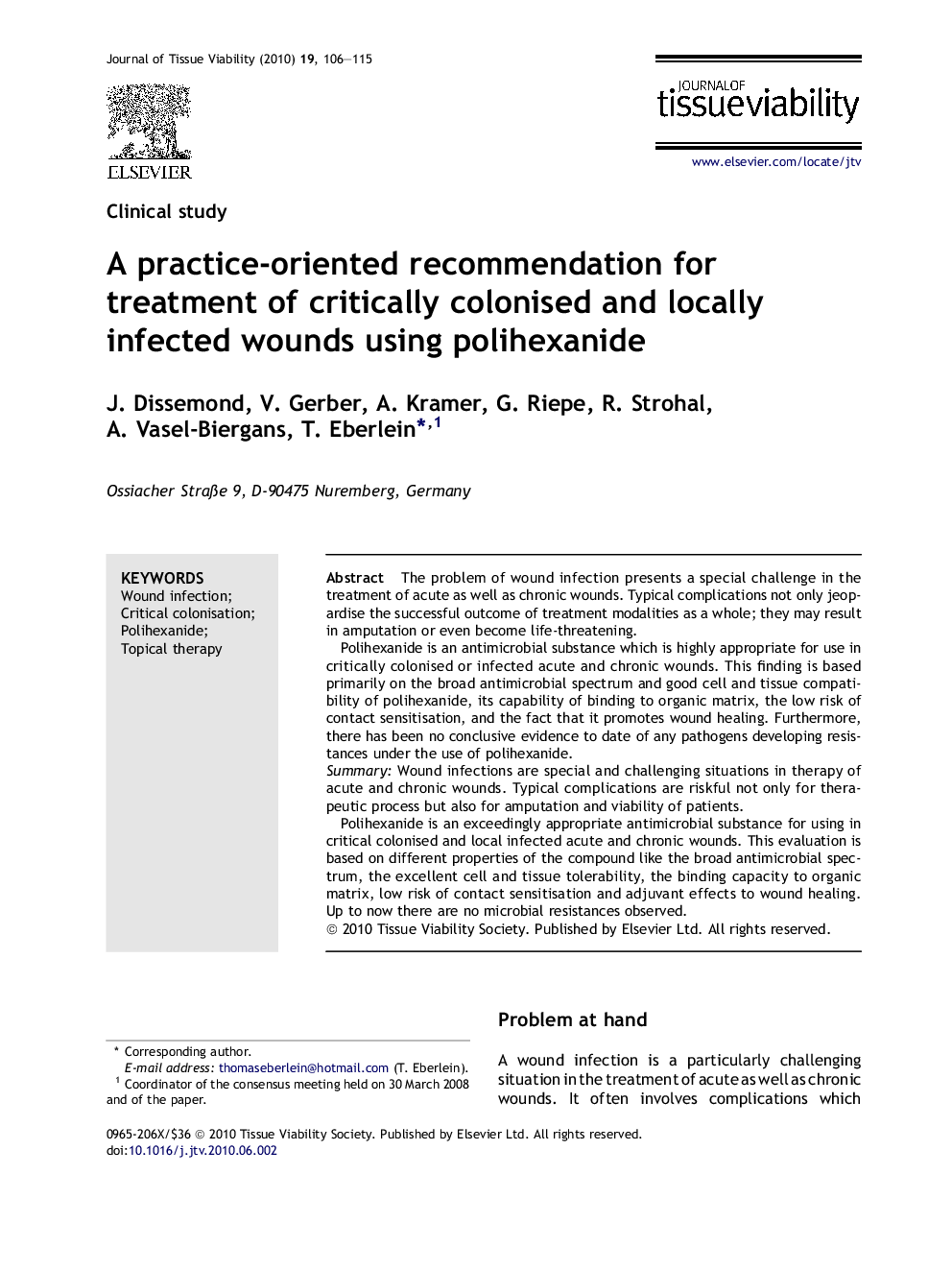| Article ID | Journal | Published Year | Pages | File Type |
|---|---|---|---|---|
| 2670882 | Journal of Tissue Viability | 2010 | 10 Pages |
The problem of wound infection presents a special challenge in the treatment of acute as well as chronic wounds. Typical complications not only jeopardise the successful outcome of treatment modalities as a whole; they may result in amputation or even become life-threatening.Polihexanide is an antimicrobial substance which is highly appropriate for use in critically colonised or infected acute and chronic wounds. This finding is based primarily on the broad antimicrobial spectrum and good cell and tissue compatibility of polihexanide, its capability of binding to organic matrix, the low risk of contact sensitisation, and the fact that it promotes wound healing. Furthermore, there has been no conclusive evidence to date of any pathogens developing resistances under the use of polihexanide.SummaryWound infections are special and challenging situations in therapy of acute and chronic wounds. Typical complications are riskful not only for therapeutic process but also for amputation and viability of patients.Polihexanide is an exceedingly appropriate antimicrobial substance for using in critical colonised and local infected acute and chronic wounds. This evaluation is based on different properties of the compound like the broad antimicrobial spectrum, the excellent cell and tissue tolerability, the binding capacity to organic matrix, low risk of contact sensitisation and adjuvant effects to wound healing. Up to now there are no microbial resistances observed.
